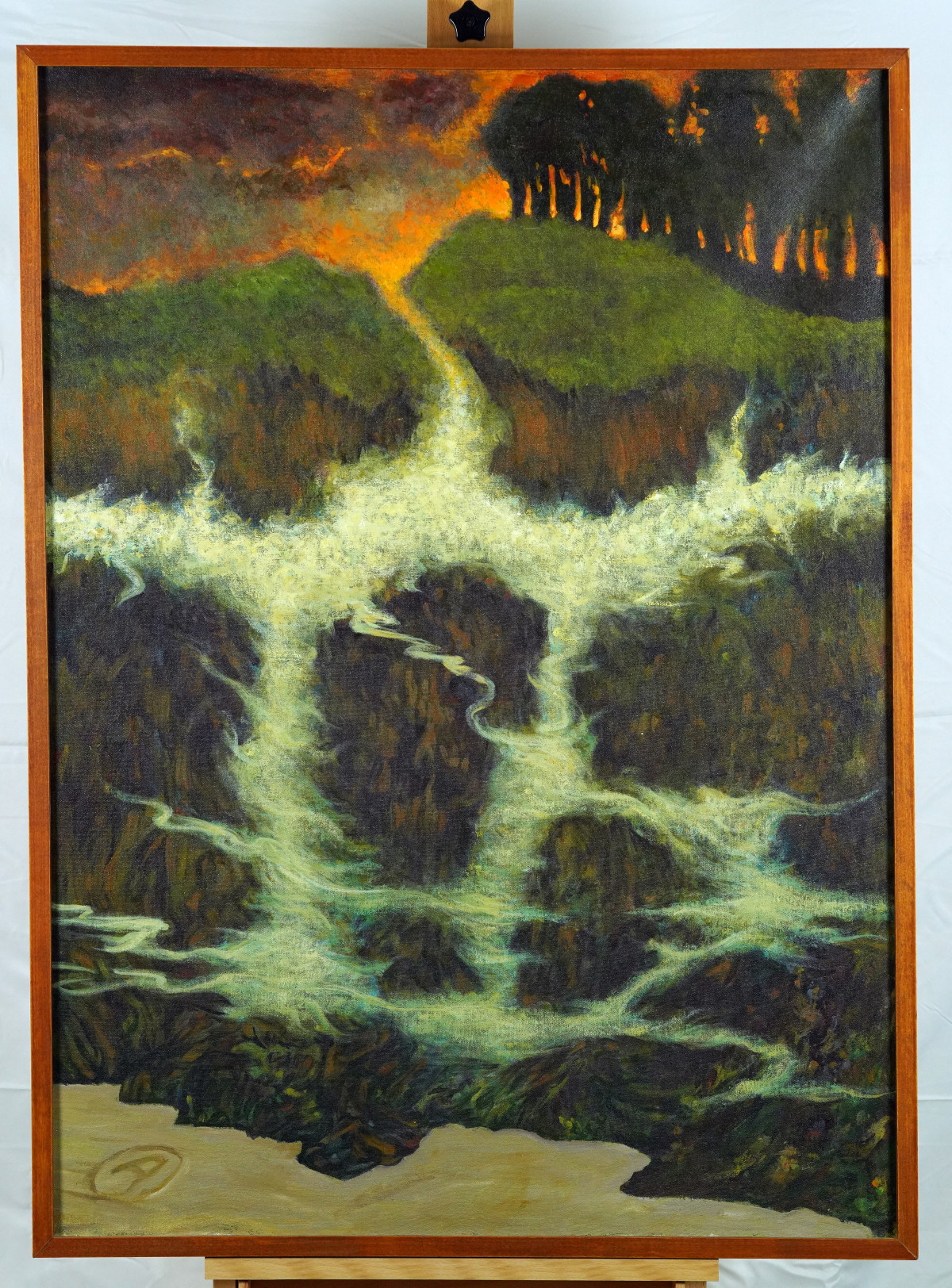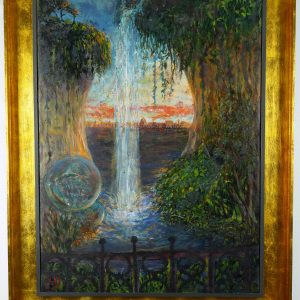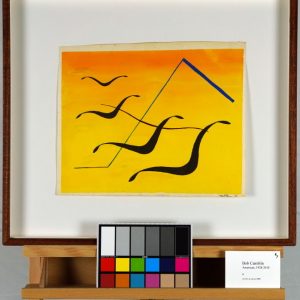Description
anonymous coastline, no date
Acrylic on canvas
Signed A (what is the reason for this?)
48 x 31 in. (frame)
original, includes certificate of authenticity from ArtTrust
In this painting “Anonymous Coastline”, a powerful river cascades down a cliffside, rushing into an unseen chasm below. The thick mist and frothy waters give the impression of turbulent force, while the dark foliage along the banks suggests a wild and untamed nature. The glow from above creates a dramatic contrast, possibly indicating sunset or a fire’s distant glow. There is a sense of drama in the colors, with deep greens, oranges, and yellows that evoke both the beauty and danger of nature.
From a Zen perspective, the painting could be seen as a representation of the impermanence and constant change in life. The flowing water symbolizes the ever-changing nature of existence, moving without hesitation towards the unknown. In Zen, water often embodies qualities such as adaptability and persistence, bending and shaping itself to the path it follows. This aligns with the concept of “mu” (無), meaning emptiness or the void, where the water is in a state of constant motion, never static. The painting invites contemplation on letting go and allowing the natural flow of events to guide one’s path.
Relating this image to the I Ching, it can be associated with the Hexagram “Huan” (渙), which means “Dispersion” or “Dissolution.” This hexagram emphasizes the need to disperse blockages and allow energy to flow freely. In the painting, the water cascades forcefully, potentially breaking through barriers. The symbolism reflects the idea of overcoming obstructions in one’s life, promoting clarity and release from stagnation. The fiery glow at the top might symbolize illumination or enlightenment achieved through the breaking of constraints.
Combining these interpretations, the image can be seen as a metaphor for life’s inevitable flow and the need to embrace change. The rushing waters echo the Zen practice of detachment, encouraging viewers to surrender to life’s currents. Meanwhile, the I Ching hexagram Huan reinforces the importance of clearing obstacles to allow one’s energy and intentions to align with the natural course. The interplay of light and dark, turbulence and calm, further suggests the balance one must seek between surrender and action.
In terms of art history, this piece evokes elements from the Romantic period, where nature’s grandeur and power were frequently depicted to stir emotional responses. The dramatic use of light and dark recalls the chiaroscuro technique of Baroque painting, which aimed to convey intensity and spiritual depth. The theme of turbulent waters also appears in works by artists like J.M.W. Turner, who used natural elements to reflect the human experience and emotional states.
*Shipping cost will vary, please inquire at sales@camblingallery.com before purchasing.
Currently ships from Oregon, USA
Member of artnet? Apply for a discount! Inquire about intergallery and permanent loans for museums.
Reproductions of this drawing are available in multiple sizes!
Click here to use our high-resolution viewer!
This artwork is available with a non-fungible token to ensure traceability and transparency of provenance.
The royalty factor – Unlike traditional artworks, such as paintings, mosaics, statues, and the like, NFTs can be programmed to provide royalties to you every time the painting (and token) is sold and resold – for eternity. That mind-bending Camblin you sold could be worth millions one day and provide income for your great-great-great grandkids!
Anti-forgery – The central idea underpinning NFTs is that they are built on the blockchain, which is meant to offer advanced security. Think of it like an un-erasable and un-avoidable copyright.
Easy authentication – Another compelling aspect of NFT art and NFTs in general is the ability to quickly and easily authenticate items, as the record of ownership is scrupulously kept on the blockchain.




